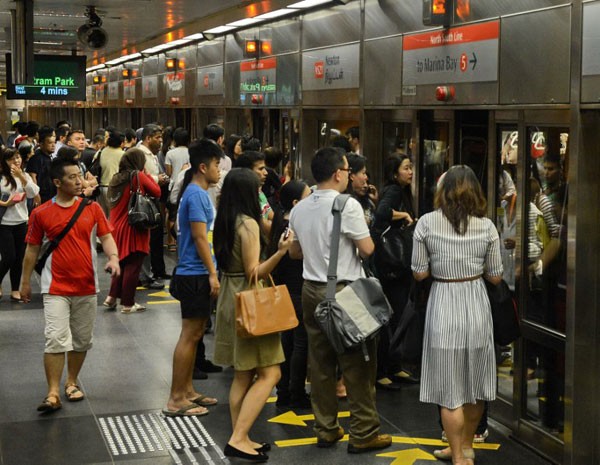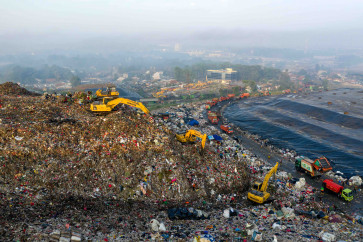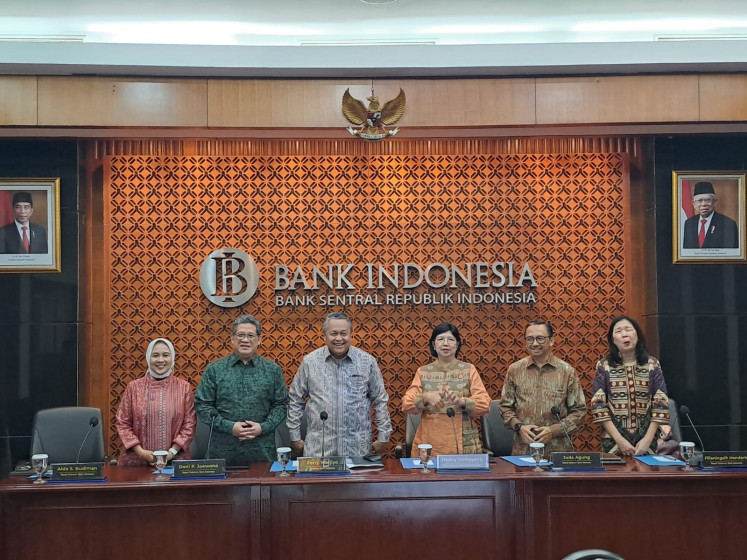Singapore gets a taste of commuting chaos as trains fail
Commuters in Singapore experience the failure of two of its five mass transit trains.
Change Size
 Commuters boarding a crowded train at the subway station in Singapore on Feb 13, 2013. (AFP/ Roslan Rahman)
Commuters boarding a crowded train at the subway station in Singapore on Feb 13, 2013. (AFP/ Roslan Rahman)
S
ingapore’s reputation for slick infrastructure and efficient public transport received a knock Friday morning as two of its five mass transit rail lines suffered signaling failures, leaving thousands of disgruntled passengers late for work and unleashing a tirade of criticism on the social media sites of the two rail operators.
"Lovely....I’ll send ye the bill for the cab I’m having to take to work," wrote one commuter. "Hello #mrt where are you? forgot to get out of bed this morning?" riffed another. Pictures of packed stations, queues for buses and stranded trains soon did the rounds in a city unused to the kind of disruptions that commuters in places like New York and London face regularly.
Singapore’s Mass Rapid Transit operators, SBS Transit Ltd., which runs the newest and driverless Downtown line, and SMRT Corp., operator of the oldest North-South line, both blamed faulty signaling for the delays. The two lines, which both run north from the city center, were operating normally by 9:15 am. SMRT advised commuters to cater for "additional traveling time" on the North-South Line on Friday evening.
The delays are symptomatic of a learning curve that many Asian cities are facing as they upgrade infrastructure to cope with swelling urban populations. In Singapore, where car ownership is discouraged with taxes that push the cost of a Ford Focus over S$100,000 (US$73,300), commuters are in the front line of the change to driverless rail networks.
For decades, the city’s award-winning airport, bougainvillea-fringed highways and spotless mass transit trains have been the envy of neighboring countries. But since 2000, the island nation’s population has jumped from less than 4 million to more than 5.6 million, straining a public transport network that has struggled to keep up.
The efficiency of the system led to overconfidence, said Lock Kai Sang, engineering professor at the Singapore Institute of Technology and a former member of an Independent Advisory Panel appointed by the Land Transport Authority to assess the rail system’s power supply.
“At a certain point, there wasn’t sufficient attention being paid to the maintenance,” he said. “They were too confident at one point.”
Now, he says, the government and rail operators are putting in a lot of effort to install systems that allow predictive maintenance, designed to stop problems before they occur.
This morning’s troubles occurred because of two separate and unrelated faults, Singapore’s Land Transport Authority said in a statement. A fault on SBS’s 3-year-old line meant the trains had to be manually driven from the shed onto the main line before the computers could take over, causing delays on the route.
On SMRT’s North-South line, the second mass transit rail to open in Southeast Asia, trains had to run at reduced speeds for safety reasons due to signaling faults. The 29-year-old line has been plagued with glitches for months as the company installs and tests a new signaling system that would ultimately allow that route to also be driverless.
The Land Transport Authority said both incidents behind Friday’s delays would be "thoroughly investigated".
While SMRT runs its lines, the rail network and stations were taken over by the government in 2016 to allow the operator to concentrate on improving service. Previous disruptions to the network, which is less than half the size of the New York subway system, have sometimes been punished with fines of as much as S$5.4 million for the operator.
But Singapore commuters are losing patience. For most workers, the MRT system is the only quick and affordable way to get to work. It has also tarnished the city’s reputation, especially among workers who remember when they could brag that they had one of the best rail systems in the world.
"With the recent setbacks, I would not want to boast that the Singapore system is world-class," said Lock at the Singapore Institute of Technology. "Once we have the problem fixed, I think we’re moving there."
Or, as one commentator on social media remarked, next to a picture of schoolkids queuing at a train station to get an excuse note for being late for examinations: "Poor kids. When I was their age I could set my watch according to the train schedules."






